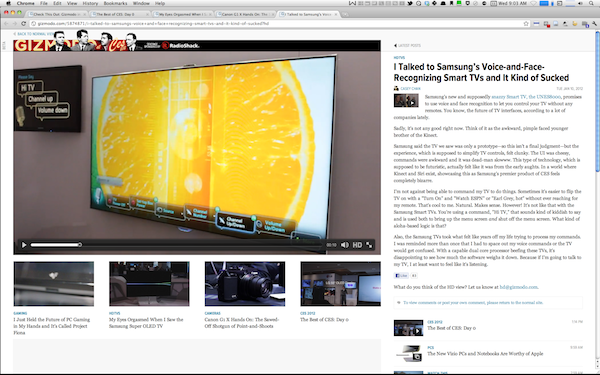
Gizmodo, the popular gadget site and pageview king of Gawker Media, debuted a new look last night that they’re calling HD view, and it’s big. Not big in the grand scheme of things — big in the number of pixels it takes up. Whereas most websites top out at around 1000 pixels in width, Gizmodo HD stretches like Plastic Man, with photos and videos stretching wider and wider as the browser window does too. On my 1900-pixel-wide monitor, pages like this one (photo-dominant) and this one (video-dominant) both resize all the way to blowout width. Call it the doublewide approach.
(The screenshot above is obviously less than full size; to see its full, 1920-by-1200-pixel glory, click here.)
This is the flip side of responsive design, the web-design idea that BostonGlobe.com’s recent launch brought to the attention of lots of news execs. In the case of the Globe (and in most other responsive efforts), the primary appeal is the ability to get small — to build a website that can look good both on your laptop and on your smartphone without having to build a separate mobile site. (The Globe’s website expands up to 1230 pixels, but not beyond that.) But responsive design works in the other direction too, and Gizmodo’s new look is an attempt to play with that — to give more space to the big photos and big videos that Gawker Media’s been trying to push over the past year.
At this point, HD view is very much a beta (it won’t work in all browsers, for instance, and there’s no place for comments), and seems more like a parlor trick than a feature. But why might a news organization be interested in a doublewide view? What might be the use cases for an HD view?
It’ll probably be a while before the doublewide becomes much more than a novelty, but it’s worth thinking about how a news site might look different if, instead of thinking small (that is, mobile), it thought big.